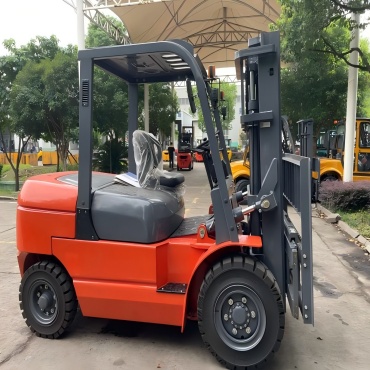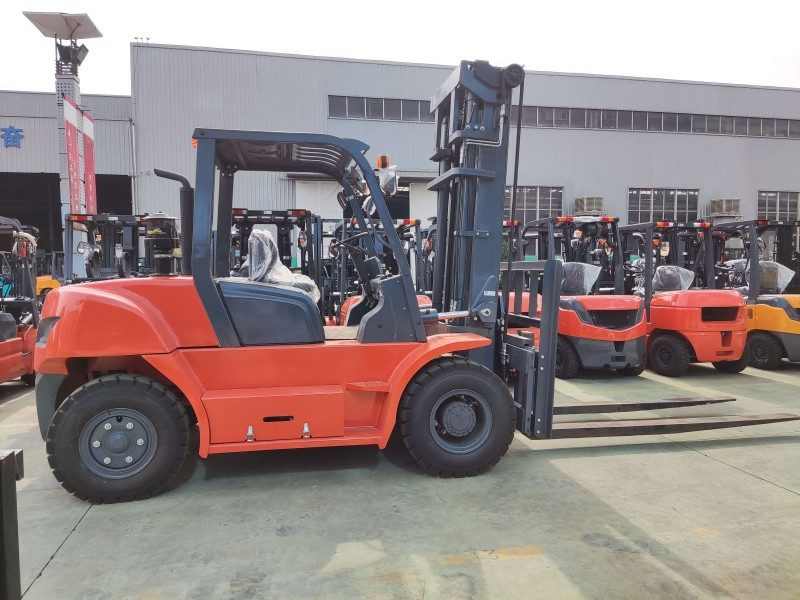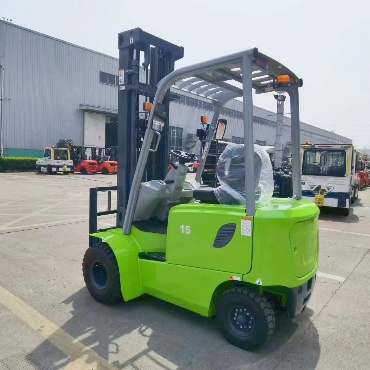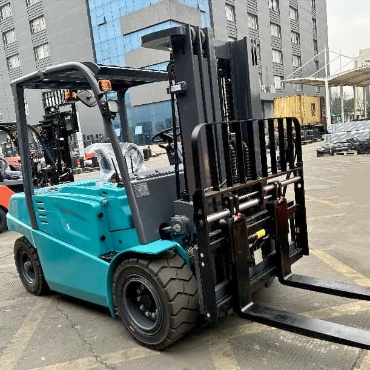- Diesel Forklift
-
- 25-30tonne Diesel Forklift 16T Forklift Truck 4.5 Ton Diesel Forklift 48 Ton Diesel Forklift 3 Ton Diesel Forklift 3.5 Ton Diesel Forklift 2.5 Ton Diesel Forklift 33 Ton Diesel Forklift 15 Ton Diesel Forklift 10 Ton Diesel Forklift 8 Ton Diesel Forklift 4 Ton Diesel Forklift 6Ton Forklift 2 Ton Diesel Forklift 1 Ton Diesel Forklift 1.8 Ton Diesel Forklift 1.5 Ton Diesel Forklift 7 ton forklift 35 ton Forklift Rough Terrain Forklift
- Electric Forklift
-
- Narrow Aisle Stand Up Counterbalance Forklift – High Efficiency Warehouse Solution 3.8ton Low Voltage Lithium Battery Forklift 12t Lithium high capacity forklift 12t large capacity electric forklift 8ton Electric Forklift 10t electric forklift truck 25ton Lithium Battery Forklift 7ton Electric Forklift 16-20t Large Capacity Lithium Battery Forklift 2 Ton Electric Forklift 1.8 Ton Electric Forklift 6 Ton Electric Forklift 1.5 Ton Electric Forklift 1.0-1.5 Ton Electric Forklift 2.5 Ton Electric Forklift 3.5 Ton Electric Forklift 4.0-4.5 Ton Electric Forklift 5 Ton Electric Forklift 3 Ton Electric Forklift 1.6-1.8Ton Three Wheel Electric Forklift 2 Ton three wheel electric forklift
- Rough Terrain Forklift
-
- 3.5t-4ton 4 wheel drive forklift 7 Ton All Rough Terrain Forklift 2-2.5T Rough Terrain Forklift Truck 4 ton off road forklift truck 3t 4 wheel drive forklift for sale 3.5t Two Wheel Drive Rough terrain forklift 3T Diesel Rough Terrain 2WD Forklift FLIFT 3.5ton all rough terrain forklift for sale 2WD 3t off Road Rough Terrain Forklift
- Electric Reach Truck & Pallet Truck / Pallet Stacker
-
- 5ton end rider electric pallet truck with customized 1.8m fork length 10ton-15ton heavy duty electric pallet truck 2.5ton all terrain electric pallet jack 1.5ton-2ton all terrain electric pallet truck with crane jib Counterbalanced Pallet Stacker 1600 lb to 2000 lb Capacity for Indoor Warehouses Heavy Duty 2T-2.5T Electric Stacker Forklift | High-Performance Stacker Lift High-Capacity 2.5t electric reach truck 1.0t -1.5t Electric Walkie Straddle Stacker 2ton Fully Electric Pallet Stacker 3 stage mast 2ton electric rough terrain pallet stacker 1.5ton off road Rough Terrain Stacker 1.8ton walkie Electric Pallet Truck Jack 1.5Ton Electric Pallet Stacker | Durable Walkie Stacker for Easy Material Handling 1200kg walking type electric pallet stacker 2ton roll and reel electric pallet truck Walkie Counterbalanced Stacker 1500–2000kg Capacity Compact Design 1ton outdoor rough terrain counterbalanced pallet stacker 3300lbs Electric off-road pallet stacker 2t Rough Terrain Pallet Truck Powered Pallet Truck with PU Wheels-2000kg Electric Pallet Jack 2t Elecric Hand Truck 1.5 Ton Electric Walkie Pallet Truck – Compact Power for Efficient Material Handling 2 Ton Reach Forklift 1.5 Ton Reach Forklift 2Ton -3Ton Electric Pallet Truck Semi-electric Pallet Stacker 1ton-1.6ton 3 Way Pallet Stacker Multi-Directional Sideloader Forklift 4 direction reach truck
- Customization Forklift
-
- 900kg CDD09B Electric Walking Type Counterweight Stacker Professional Walking Type Electric Stacker with Special Attachment 1ton Electric Outdoor Rough Terrain Telescopic Spreader Stacker 4t QDD40 Seated type Electric Tractor QDD60 Seated Type Fully Electric Tractor 3t QDD30C Electric Tractor with Turning Radius 1545mm 2t CQD20A Electric Simple Type Reach Forklift Truck 1.5t CQD15A Simple Type Electric Reach forklift Truck 5t Convertible Seated Electric Flat Truck 3t CBD30Z Electric Vehicle Transfer Truck 1.5t CDD15Y Electric Pallet Stacker (Rough Terrain) 1t CXD10-45 Electric High Lift-Order Picker 2t CQD20S-60 Four-way Walking Type Reach Forklift Truck CDD10A/15A Walking Type Fully Electric Pallet Stacker 3t QDD30A Standing Type Electric Tractor 1t CSD10 Man Mount Three-way Stacker 1.5t AGV type CDD15J-16 Electric Pallet Stacker CBD80 8t Electric Pallet Stacker 6t CBD60 Electric Pallet Stacker CBD120 1.2t Electric Pallet Stacker 2t CDD20D-30 Walking type Electric Pallet Staccker CDD08B-25 Counterweight Electric Pallet Stacker
- Forklift Attachements
-
- Waste Paper Fixture Fixed Short Arm non-sideshifting non-sideshifting Fixed Short Arm non-sideshifting Non-sideshifting Hinged Forks Caton Clamp Rotator non-Sideshifting Tire Clamps Pusher Turning Fork Clamps non-sideshifting Log Holder Sideshifting Broke Paper Clamps Sideshifting Sideshifting Single Load Stabilizer Fork Positioners Single Double Pallet Handler
Articulated vs Integrated Rough Terrain Forklift: What’s the Difference?
Date: 2025-09-30 View:
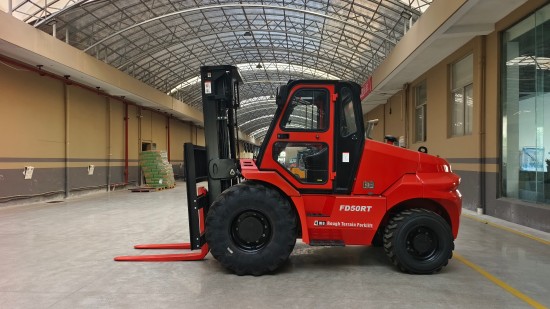
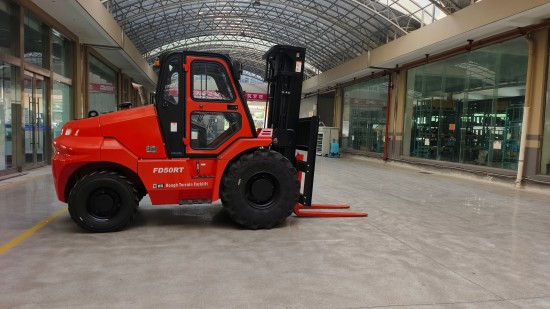
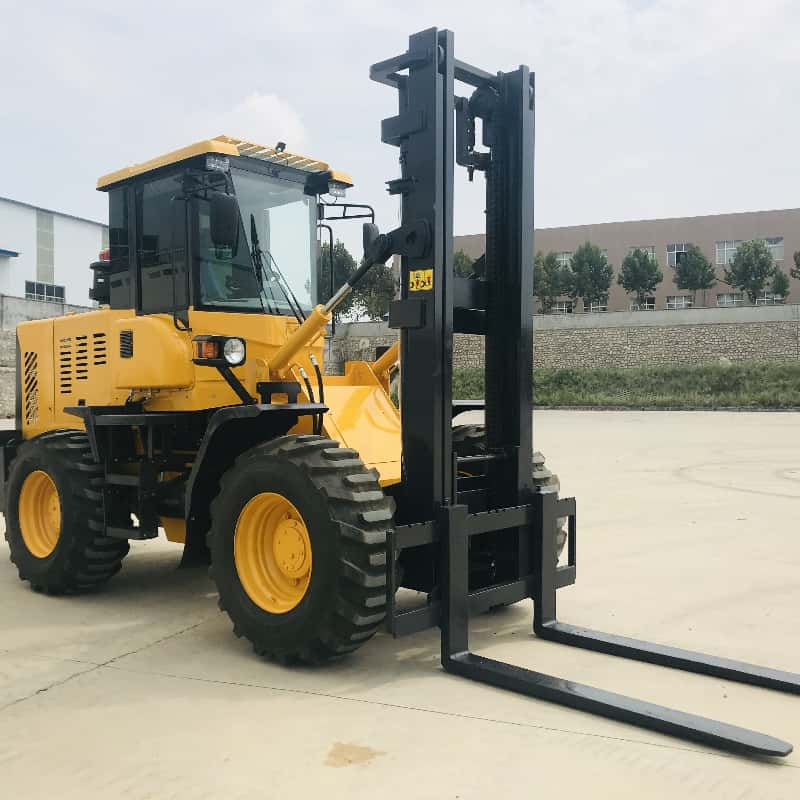
Here’s a clear breakdown of the difference between an articulated rough terrain forklift
and an integrated rough terrain forklift:
1. Structure & Steering
Articulated Rough Terrain Forklift
Built with a hinged chassis (the frame bends in the middle).
Steering is achieved by articulation of the front and rear halves, making it highly maneuverable on uneven or narrow terrain.
Often used where tight turning radii are needed (like forestry paths or construction sites with obstacles).
Integrated Rough Terrain Forklift
Built on a fixed, solid chassis (non-articulated).
Steering is done by turning the front or all four wheels, depending on the model.
Provides greater structural stability but requires more space for turning compared to articulated models.
2. Terrain Adaptabilit
Articulated rough terrain forklift:
Better at navigating very rough, uneven ground because the hinged body allows constant wheel contact with the surface.
Typically offers improved traction in off-road conditions.
Integrated off road forklift:
More stable on moderately rough but open terrain.
Handles slopes and construction ground well, but less flexible when the terrain is highly irregular.
3. Capacity & Stabilit
Articulated type:
Usually supports medium loads.
Slightly less stable under maximum load because of the articulated frame design.
Prioritizes maneuverability over lifting capacity.
Integrated type :
Can handle heavier loads with greater lifting stability.
Preferred for projects where lifting height and maximum load are critical.
4. Applications
Articulated Rough Terrain Forklift
Forestry operation, Mining sites,
Agriculture with muddy/uneven fields.
Integrated Rough Terrain Forklift
Large construction project, Industrial yards with gravel/rocky surfacr,
Outdoor logistics requiring higher load stability.
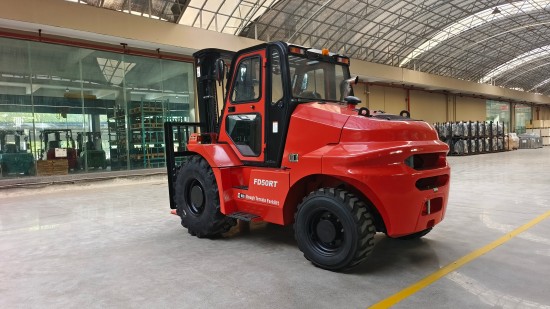
|
Feature / Criterion |
Articulated Rough Terrain Forklift |
Integrated (Rigid-Frame) Rough Terrain Forklift |
|
Chassis / Frame |
Hinged / articulated frame (front & rear sections pivot) |
Solid, non-articulated (rigid) frame |
|
Steering Mechanism |
Steering by articulation (middle pivot) and often front or rear wheel steering |
Traditional steering (front wheels or 4-wheel steering depending on model) |
|
Maneuverability / Turning Radius |
Very tight turning radius, excellent in constrained or obstacle-filled areas |
Larger turning radius (though some integrated models add 4WD / 4WS to improve) |
|
Terrain Contact / Wheel Engagement |
Better at maintaining wheel contact over uneven terrain (articulation helps wheels stay grounded) |
Good on rough ground but less forgiving over extreme undulations |
|
Structural Stability / Rigidity |
Slightly less rigid under heavy loads, more flex in the frame |
More structural stiffness, better stability under heavy loads |
|
Load Capacity / Height |
Often used for moderate tonnages; may be limited in lift height compared to rigid designs |
Capable of heavier loads and greater lift heights, depending on design |
|
Durability / Maintenance |
More moving joints (articulation pivot, bearings, linkage) that may need more upkeep |
Simpler frame structure, fewer articulation parts to maintain |
|
Space Constraints / Usage Scenario |
Ideal for tight, obstacle-dense sites (forestry, orchards, narrow construction zones) |
Better suited for open worksites, yards, or when heavy lifting over rough ground is needed |
|
Differential Lock & Off-Road Ability |
Relies mainly on articulation for traction; may struggle in extreme bogging conditions |
Equipped with a real differential lock device, giving it ultra-strong capability to escape from difficulties such as mud, sand, or uneven ground |
|
Stability on Slopes / Side Tilt |
Slightly more risk of instability under extreme side slopes due to pivot point |
Better performance under side loads / tilts because of rigid frame distribution |
|
Visibility and Operator Control |
Operator often has more immediate feedback from articulation behavior but may require more skill |
More predictable, stable handling; operator may find control more familiar |
|
Applications / Best Use Cases |
Forest, orchard, steep/muddy terrain, tight corridors |
Construction sites, heavy load yards, material handling over rough surfaces but with space for turning |
What is the main difference between an articulated rough terrain forklift and an integrated rough terrain forklift?
The biggest difference lies in the frame design. An articulated forklift has a hinged chassis that allows the front and rear sections to pivot, giving it better maneuverability in tight and uneven areas.
In contrast, an integrated forklift has a rigid frame, offering stronger structural stability and higher lifting capacity.
Which forklift is better for very rough or muddy ground?
An integrated off-road forklift is often the better choice. It comes with a real differential lock device, which gives the machine ultra-strong traction to escape from mud, sand, or difficult ground conditions.
Articulated forklifts rely more on their pivoting chassis but may struggle in extreme bogging situations.
What is the minimum turning radius of an integrated vs articulated forklift?
For a 5-ton rough terrain forklift, the numbers are clear:
Integrated all-terrain forklift: minimum turning radius is only 4540mm.
This means integrated types are actually more compact in turning, despite their rigid frame design
Which forklift type should I choose for my project?
If your worksite has narrow paths, orchards, or forested areas with many obstacles, an articulated forklift can adapt better.
But if you need higher lifting capacity, stronger off-road ability, and a smaller turning radius, an integrated rough terrain forklift is usually the smarter option.
Engine Options for the 5-Ton Integrated Rough Terrain Forklift
Thanks to the integrated 4WD design, this forklift has a larger engine compartment,
making it possible to equip more powerful and environmentally friendly engines, such as those meeting EPA Tier 4 and EU Stage V standards.
|
Engine Type |
Power Output |
Emission Standard |
Key Advantages |
|
Standard Diesel Engine |
55kW – 60kW |
Local/Regional Standard |
Reliable, cost-effective, suitable for markets with less strict emission rules |
|
Cummins 55kW Engine |
55kW |
EU Stage V |
Meets the latest EU emission requirements, cleaner operation, fuel-efficient |
|
EPA Tier 4 Engine (Optional) |
55kW – 60kW |
EPA Tier 4 Final |
Compliant with U.S. emission laws, reduced NOx and particulate matter, eco-friendly |
|
Custom Engine Options |
Upon request |
Market-specific |
Flexible installation based on local regulations or customer preference |
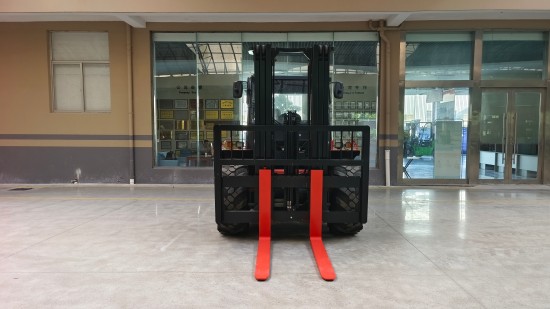
Why Choose the Integrated Design?
Bigger Engine Compartment and stronger cooling system :
The integrated forklift frame allows more space for advanced engines compared to articulated modelsLarger space means better air circulation and heat dissipation.
in additon,the crutial point is that, the intergrated all terrain forklift can reach the 35% gradeability
.png)

